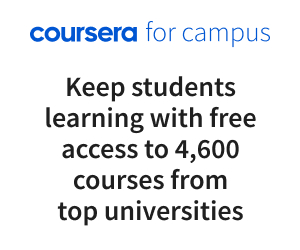New data can help identify gaps in skill sets and help improve graduate employability
The dramatic shift to online education since March 2020 has required universities to offer digital courses that are agile, adaptable and deliverable at scale. More than 1.3 billion learners from schools and universities have been affected by Covid-19 lockdowns and campus closures, according to Unesco.
Since Coursera offered its campus-focused service free in March, the online learning platform, which partners with institutions around the world, has launched more than 9,800 new courses. It now helps educate an additional 1.2 million students, says Raghav Gupta, Coursera’s managing director for India and the Asia-Pacific region.
“These students are benefitting from high-quality online content, and campuses have found a mechanism to move learning online,” he explains.
Gupta argues that online learning is here to stay, reiterating the point he made during the THE Live Asia 2020 session, “The importance of competency-based learning for students during changing times”.
“Online education has been around for a while, but Covid-19 has accelerated it,” he says, adding that this is part of a larger trend, where companies want to upskill and reskill their staff with short courses, as technology revolutionises the workplace.
Online learning can offer the agility to meet this demand, which traditional in-person courses may lack. “Last year, we looked at our analytics and produced a global skills index,” he says. “We know by industry where the actual investment is happening in terms of skills development.”
Through a “massive data-crunching exercise”, Coursera has developed an essential skills map for digital transformation. This map shows, within degrees and courses, places where there could be gaps in the skill sets that institutions are offering their students.
It has also launched one- to two-hour guided projects for students in several programming languages, which can be completed without having to purchase the accompanying, often expensive software.
Another major driver in the adoption of widespread online learning will be regulatory changes, says Gupta. India’s government, for example, recently increased the proportion of university degrees that can be taught online from 20 per cent to 40 per cent. As well as improving access, enabling more online education to be used for course credit improves course completion rates.
The coronavirus pandemic has shown how important it is for higher education institutions to be adaptable. Online learning will continue to give them the ability to better serve both the changing demands of student students and employers, and a world where lockdowns and travel restrictions will continue to disrupt campus learning for the foreseeable future.
Watch the whole session above or on THE’s YouTube channel.
Access all the on-demand recordings and resources from THE Live Asia 2020.











































































